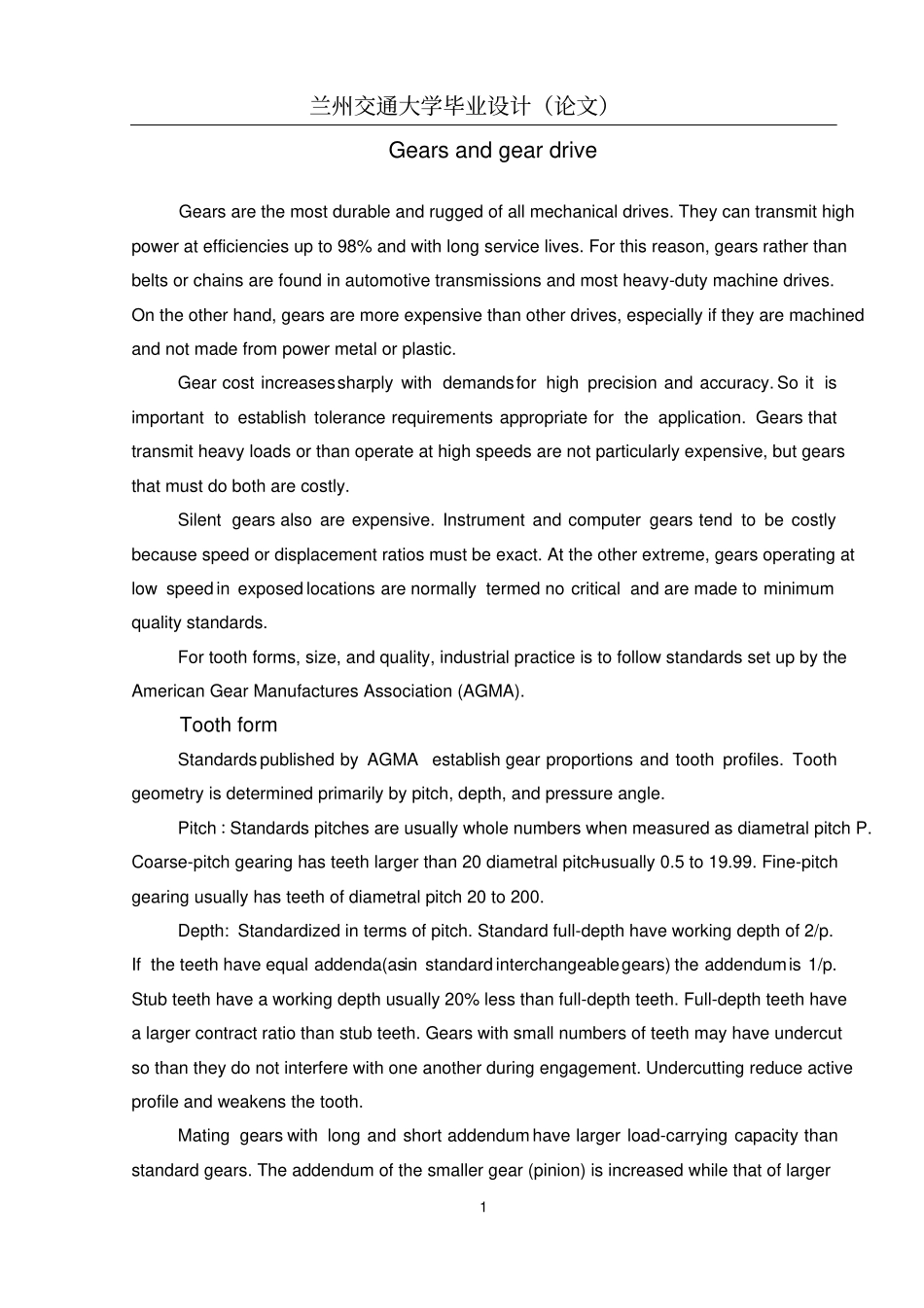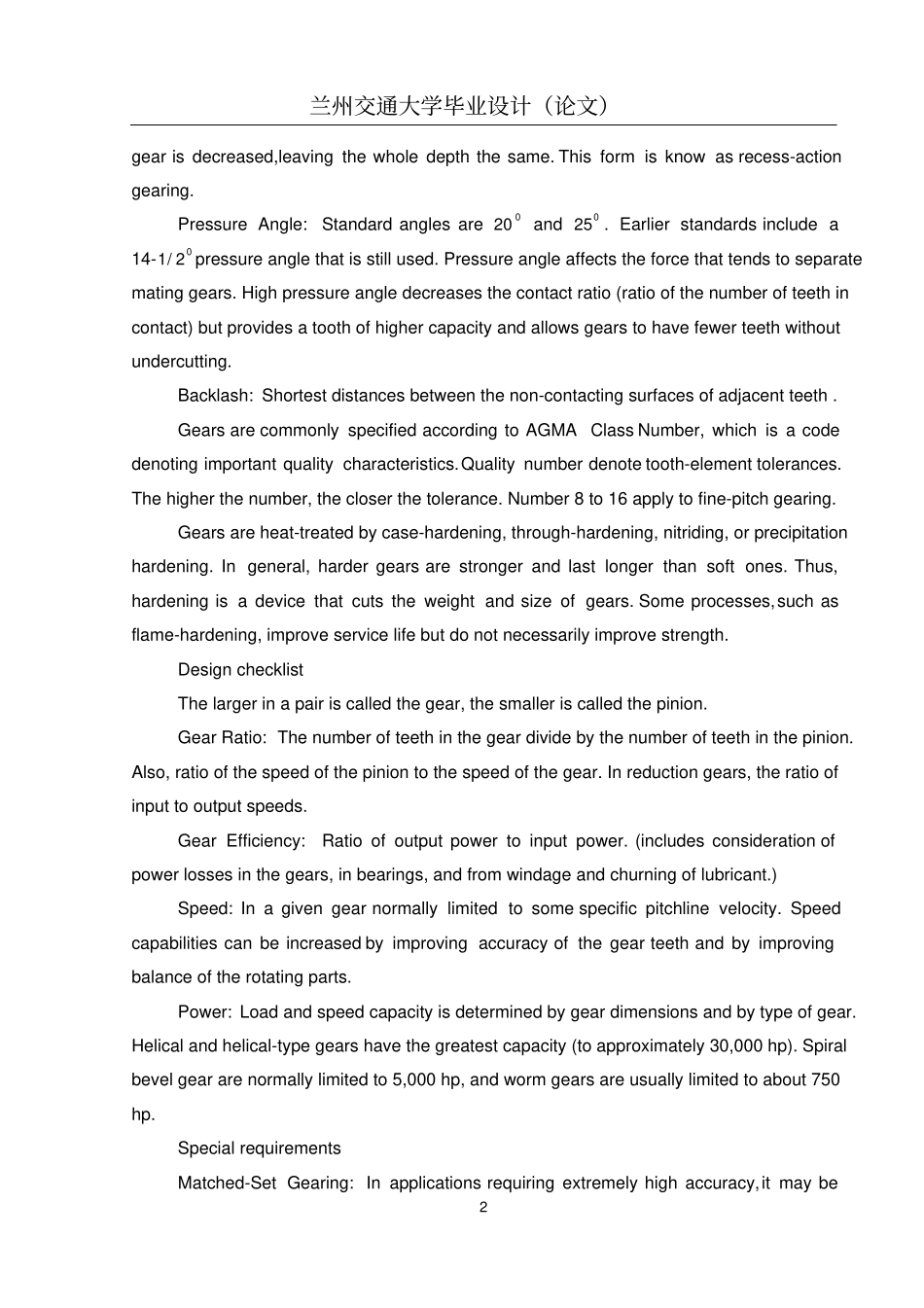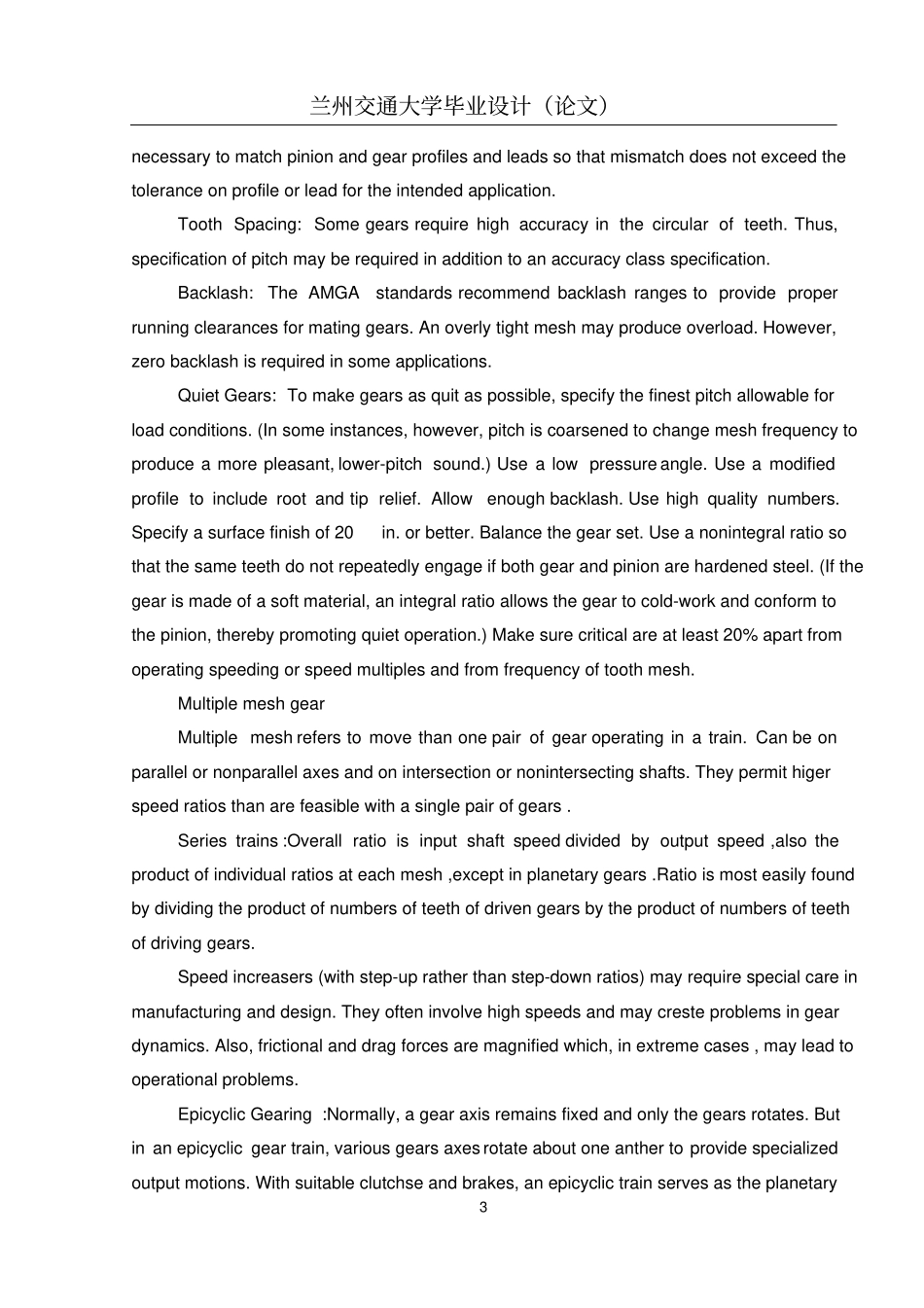兰州交通大学毕业设计(论文)1 Gears and gear drive Gears are the most durable and rugged of all mechanical drives. They can transmit high power at efficiencies up to 98% and with long service lives. For this reason, gears rather than belts or chains are found in automotive transmissions and most heavy-duty machine drives. On the other hand, gears are more expensive than other drives, especially if they are machined and not made from power metal or plastic. Gear cost increases sharply with demands for high precision and accuracy. So it is important to establish tolerance requirements appropriate for the application. Gears that transmit heavy loads or than operate at high speeds are not particularly expensive, but gears that must do both are costly. Silent gears also are expensive. Instrument and computer gears tend to be costly because speed or displacement ratios must be exact. At the other extreme, gears operating at low speed in exposed locations are normally termed no critical and are made to minimum quality standards. For tooth forms, size, and quality, industrial practice is to follow standards set up by the American Gear Manufactures Association (AGMA). Tooth form Standards published by AGMA establish gear proportions and tooth profiles. Tooth geometry is determined primarily by pitch, depth, and pressure angle. Pitch :Standards pitches are usually whole numbers when measured as diametral pitch P. Coarse-pitch gearing has teeth larger than 20 diametral pitch –usually 0.5 to 19.99. Fine-pitch gearing usually has teeth of diametral pitch 20 to 200. Depth: Standardized in terms of pitch. Standard full-depth have working depth of 2/p. If the teeth have equal addenda(as in standard interchangeable...


